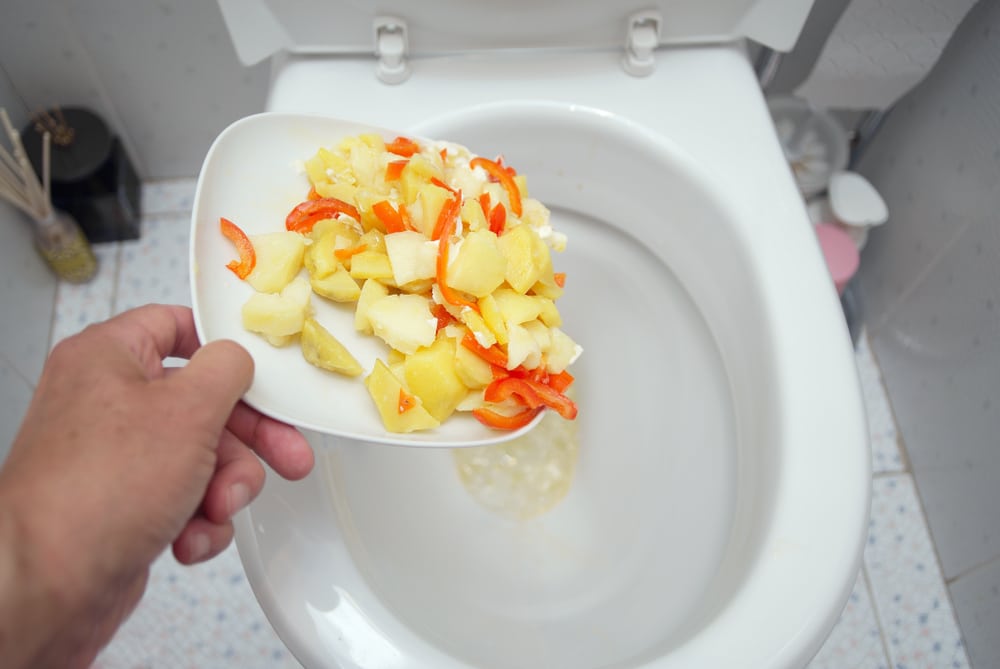Is it Permitted to Dispose of Food in the Toilet?
Is it Permitted to Dispose of Food in the Toilet?
Blog Article
Have you been trying to find insight around Think Twice Before Flushing Food Down Your Toilet?

Intro
Many individuals are often confronted with the dilemma of what to do with food waste, especially when it pertains to leftovers or scraps. One typical concern that occurs is whether it's fine to flush food down the commode. In this short article, we'll delve into the reasons that individuals could think about purging food, the effects of doing so, and different methods for correct disposal.
Reasons that individuals could consider flushing food
Lack of awareness
Some individuals may not understand the possible harm triggered by flushing food down the commode. They may wrongly think that it's a harmless method.
Ease
Purging food down the commode might appear like a fast and easy service to disposing of undesirable scraps, specifically when there's no nearby garbage can offered.
Negligence
Sometimes, people might just choose to flush food out of sheer negligence, without considering the effects of their activities.
Consequences of flushing food down the toilet
Ecological effect
Food waste that winds up in waterways can contribute to contamination and injury aquatic communities. In addition, the water utilized to purge food can stress water sources.
Pipes problems
Flushing food can bring about stopped up pipelines and drains pipes, triggering pricey pipes repair work and aggravations.
Types of food that ought to not be flushed
Fibrous foods
Foods with fibrous structures such as celery or corn husks can obtain entangled in pipelines and create blockages.
Starchy foods
Starchy foods like pasta and rice can take in water and swell, bring about clogs in pipes.
Oils and fats
Greasy foods like bacon or cooking oils should never be flushed down the toilet as they can solidify and create blockages.
Proper disposal methods for food waste
Utilizing a garbage disposal
For homes furnished with garbage disposals, food scraps can be ground up and purged through the pipes system. Nevertheless, not all foods appropriate for disposal in this manner.
Recycling
Specific food product packaging materials can be recycled, minimizing waste and reducing ecological impact.
Composting
Composting is a green means to dispose of food waste. Organic products can be composted and used to enrich dirt for horticulture.
The value of appropriate waste administration
Lowering environmental injury
Proper waste administration methods, such as composting and recycling, aid lessen air pollution and preserve natural deposits for future generations.
Securing pipes systems
By avoiding the practice of flushing food down the bathroom, homeowners can prevent pricey pipes fixings and keep the honesty of their plumbing systems.
Conclusion
In conclusion, while it may be alluring to purge food down the bathroom for ease, it is very important to recognize the prospective consequences of this activity. By adopting appropriate waste management techniques and getting rid of food waste properly, people can contribute to healthier pipes systems and a cleaner setting for all.
FLUSH FOOD DOWN THE TOILET?
FLUSHING FOOD CAN CAUSE BLOCKED DRAINS IN YOUR HOME
All of the plumbing fixtures in your home are connected to the same sewer pipe outside of your home. This outdoor sewer pipe is responsible for transporting all the wastewater from your home to the Council sewer mains. Even small pieces of food that go down the kitchen sink can cause problems for your sewer. It should therefore be obvious that flushing larger bits of food, such as meat, risks a clog in either the toilet itself or the sewer pipes. Flushing greasy food is even more problematic because oil coagulates when it cools, coating the interior lining of your pipes.
THE TOILET IS NOT A BIN
Food isn’t the only thing that people shouldn’t be flushing down the toilet. People use the toilet to dispose of all kinds of things such as tampons, makeup wipes, dental floss, kitty litter and even underwear. Water goes to great lengths to educate residents about the high costs and stress placed on wastewater treatment systems simply from people flushing the wrong stuff down the toilet. It costs taxpayers millions of dollars each year, and homeowners thousands in blocked drain repairs.
FLUSHING FOOD IS A WASTE OF WATER
Flushing food is a waste of our most precious resource - water. In June this year Level 1 water restrictions were introduced to protect water supply from drought conditions. Much of New South Wales continues to be affected by prolonged drought with recent figures revealing up to 97 per cent of the state remains in drought. Depending on whether you have a single or dual flush toilet, every single flush uses between five and 11 litres of water. In the current climate this is a huge amount of water to be wasting on flushing food that should be placed in the bin (or better yet, the compost).
https://www.jabplumbingsolutions.com.au/blog/can-you-flush-food-down-the-toilet

I was shown that write-up on through a pal on a different blog. You should take the opportunity to distribute this write-up if you liked it. Many thanks for your time invested reading it.
More Details Report this page